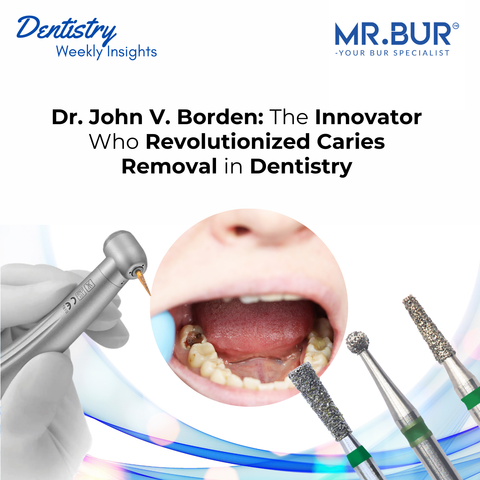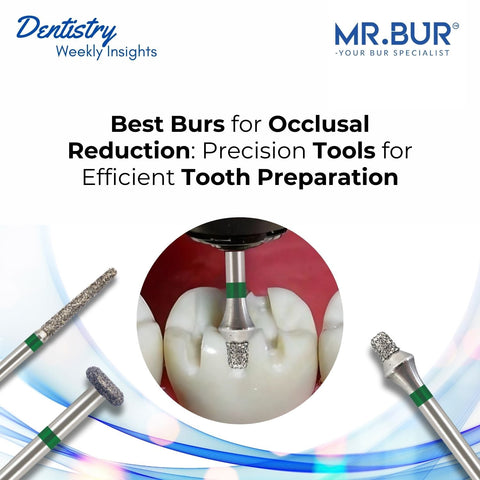Dental fillings are one of the most fundamental treatments in modern dentistry, used to restore teeth after decay removal. However, the concept of filling cavities dates back centuries. Pierre Fauchard, the father of modern dentistry, played a pivotal role in transforming rudimentary cavity treatments into a structured, scientific approach.
Unlike early civilizations that simply placed materials into cavities without removing decay, Fauchard emphasized proper cavity cleaning, preparation, and material selection — concepts that remain crucial in modern restorative dentistry. While his time lacked dental burs and rotary drills, his innovative techniques laid the foundation for today’s precision-driven procedures.
In this article, we explore how Pierre Fauchard revolutionized cavity treatment and how modern dental burs have enhanced precision in fillings restoration.
Early Dental Filling Methods: Before Scientific Dentistry
Before Fauchard’s era, dental fillings were crude and often ineffective. Earlier civilizations, including the Romans, Chinese, and Egyptians, attempted to restore cavities using materials like:
-
Stone and beeswax – Ancient civilizations used these rudimentary materials to plug cavities.
-
Silver paste (China, ~659 AD) – One of the earliest recorded uses of a metallic filling material.
-
Herbal remedies and resins – Used for temporary relief rather than true restorations.
These early methods lacked proper decay removal and shaping, often leading to recurrent infections and further tooth loss. Pierre Fauchard introduced a structured, scientific approach that forever changed dental restorations.
Pierre Fauchard: The Father of Modern Fillings
Revolutionizing Cavity Treatment in the 18th Century
In 1723, Pierre Fauchard published Le Chirurgien Dentiste (The Surgeon Dentist), one of the first comprehensive books on dentistry. In it, he systematically documented the process of removing decay and filling cavities, making him one of the first to describe a structured approach to dental restorations.
He theorized that acids derived from sugar, such as tartaric acid, played a role in dental decay—a concept remarkably close to modern scientific understanding of cavity formation. He also noted that untreated decay could lead to gum tumors, emphasizing the importance of timely treatment.
Pierre Fauchard’s Approach to Dental Fillings
Although he did not have access to modern drilling and bonding techniques, his cavity treatment process included fundamental steps that remain relevant today:
1. Caries Removal
-
Unlike earlier civilizations that filled cavities without removing decay, Fauchard insisted on cleaning out all infected material before placing a filling.
-
He used hand instruments (since rotary drills were not yet invented) to manually scrape out decay.
2. Cavity Shaping & Preparation
-
He understood that the cavity’s shape influenced how well the filling material would stay in place.
-
To ensure retention, he carefully reshaped the cavity using specialized hand tools.
3. Filling the Cavity with Metal Foils
-
Fauchard recommended hammering thin sheets of metal (lead, tin, or gold) into cavities to create a firm filling.
-
Gold was his preferred material due to its durability and resistance to corrosion, though lead was used as a cheaper alternative.
4. Compaction & Finishing
-
The metal filling was pressed and compacted tightly into the cavity, ensuring a sealed and functional restoration.
-
He noted that a properly placed filling restored both function and appearance to the tooth.
5. Observation & Maintenance
-
Fauchard emphasized oral hygiene and preventive care to avoid new decay.
-
He warned about the effects of sugary foods and acidic substances, making him one of the first dental professionals to connect diet to cavity formation.
His scientific approach set the stage for modern restorative dentistry, eventually leading to the development of amalgam fillings, composite resins, and advanced dental materials.
Modern Dental Fillings: Precision with Dental Burs
Fast forward to the present day, and dental burs have replaced hand instruments in cavity preparation, making decay removal faster, more precise, and less invasive. Unlike Fauchard’s manual scraping techniques, today’s dentists use high-speed carbide and diamond burs for efficient and controlled tooth preparation.
Step-by-Step Procedure for Dental Fillings Restoration
-
Initial Examination & Diagnosis
-
The dentist inspects the tooth visually and through X-rays to assess the decay.
-
Local anesthesia is administered for a pain-free experience.
-
Decay Removal – 330 Pear-Shaped Carbide Burs
-
Removes infected enamel and dentin with precision, ensuring efficient caries removal while preserving as much healthy tooth structure as possible.

-
Cavity Shaping – Refining with Round Carbide Burs
-
Ensures the cavity is properly shaped for optimal adhesion of the filling material.
-
Filling Placement – Restoring Tooth Structure
-
The prepared cavity is filled with composite resin, amalgam, or glass ionomer.
-
The material is layered and shaped to match the natural contours of the tooth.
-
Curing – Hardening the Composite Resin
-
A curing light is used for composite fillings to harden the material layer by layer.
-
Smoothing & Shaping – Finishing with Egg-Shaped Carbide Bur
-
Polishing – Enhancing Aesthetic & Longevity
-
The restoration is polished using the 6002 Composite Polishing Diamond Polisher to achieve a glossy finish, enhancing aesthetics while reducing plaque accumulation and ensuring a smooth, natural appearance.
-
Bite Check & Adjustment
-
The dentist ensures the filling aligns with the patient’s bite and makes necessary refinements.
Bridging Tradition with Modern Precision
Pierre Fauchard’s pioneering work in cavity treatment and fillings restoration marked a turning point in dental history. While his era lacked modern burs and bonding materials, his emphasis on decay removal, cavity preparation, and proper material selection remains at the core of today’s restorative techniques.
Today, high-speed dental burs have transformed cavity preparation, making it more efficient, precise, and minimally invasive. Thanks to these advancements, modern dentists can provide stronger, longer-lasting, and more aesthetically pleasing restorations—a testament to how far dentistry has come since the 18th century.
By combining Fauchard’s early principles with modern technology, today’s dental professionals achieve restorations that are more effective than ever before.
Explore Mr. Bur’s premium collection of carbide and diamond burs to elevate your restorative procedures with unmatched precision and efficiency.
At MR.BUR UNITED KINGDOM, we pride ourselves on exceeding expectations and continually improving to meet the evolving needs of our customers.
Diamond Burs, Carbide Burs, Surgical & Lab Use Burs, Endodontic burs, IPR Kit, Crown Cutting Kit, Gingivectomy Kit, Root Planning Kit, Orthodontic Kit, Composite Polishers, High Speed Burs, Low Speed Burs
Subscribe our newsletter now!






